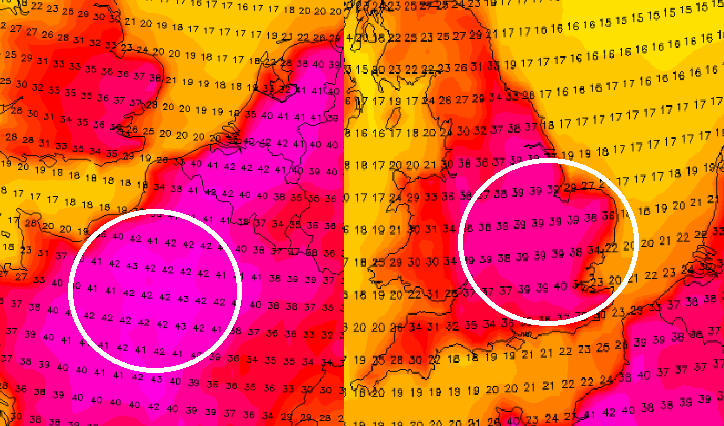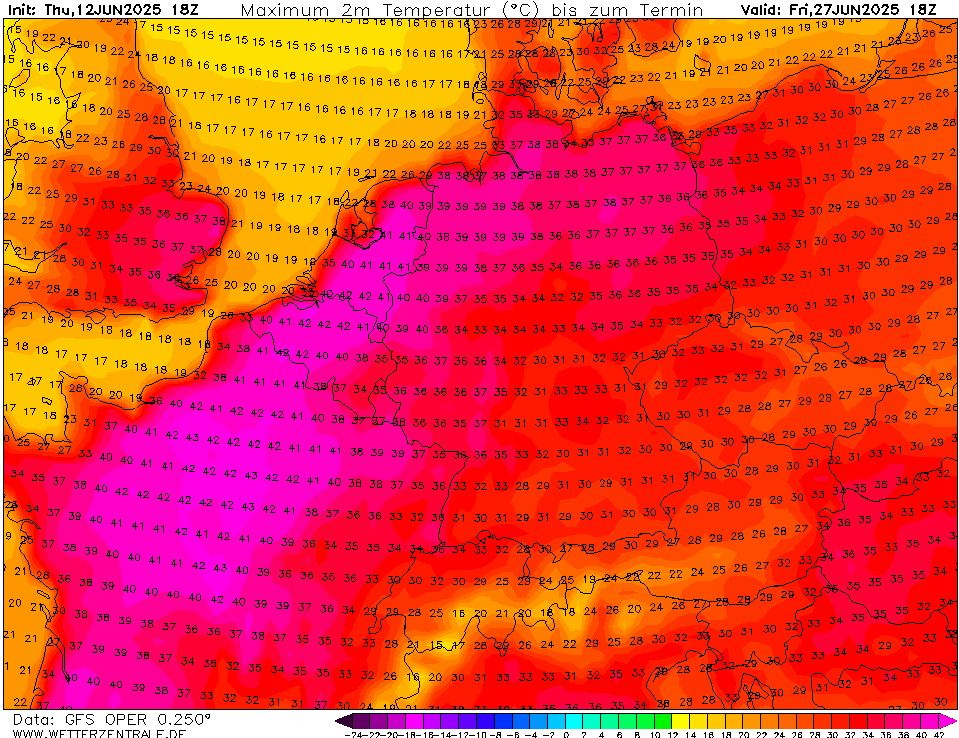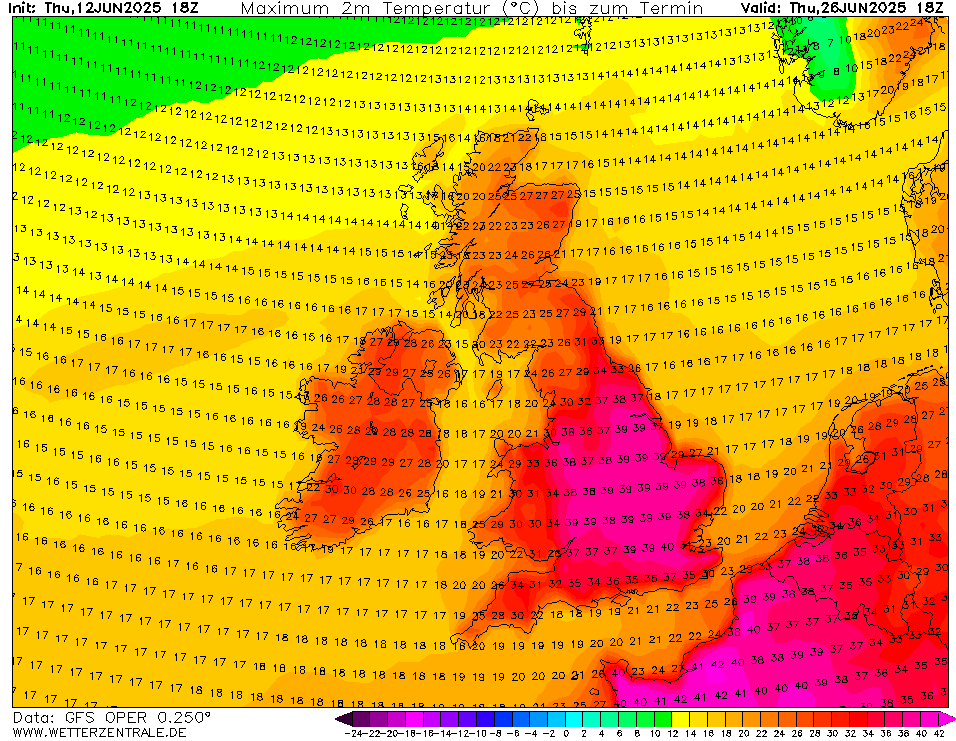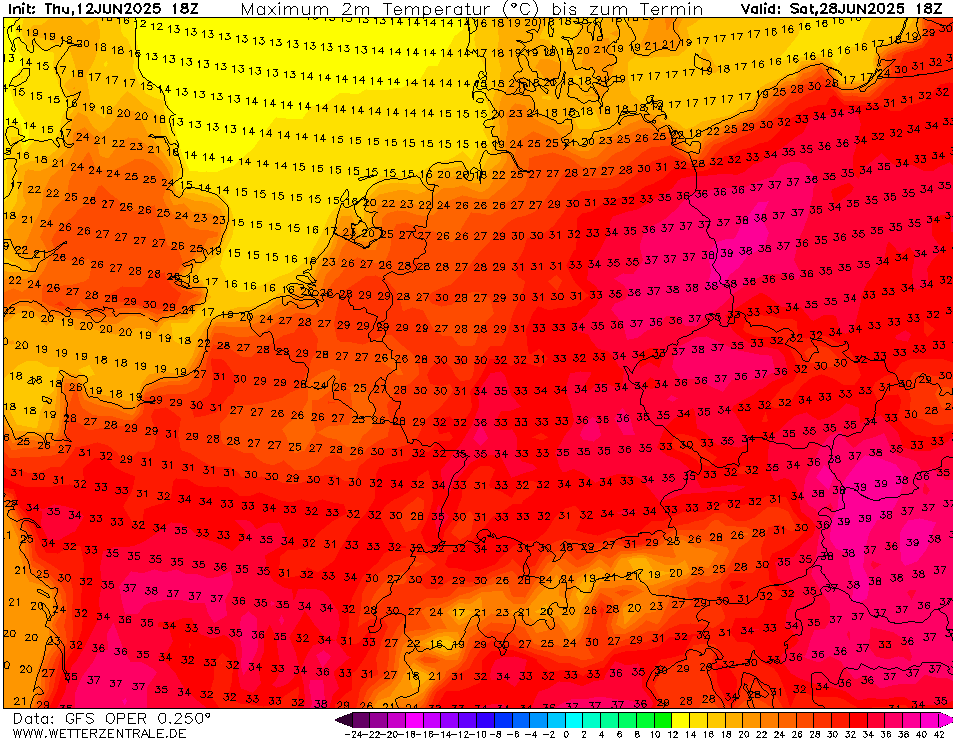
Meteorological models are sounding the alarm: the GFS (Global Forecast System) has projected unprecedented heat engulfing Western Europe, with Paris potentially reaching a staggering +45 °C and London a blistering +42 °C in its extended outlook.
While long-range forecasts often carry uncertainty, the intensity of this projected heatwave is enough to raise serious concerns across Europe.
🌡️ GFS vs. Reality: Expect Even Higher Actual Highs
GFS outputs typically underestimate national daily maximum temperatures by 2–3 °C. This is because:
- GFS provides grid-averaged temperatures at ~2 m above ground.
- It smooths out extremes due to resolution (~25 km), missing urban heat islands.
- Local topography, vegetation, and ground dryness can intensify real-world highs.
What this means:
If GFS outputs +43 °C for Paris, actual urban temperatures could soar to +45–46 °C—approaching or breaking all-time European heat records. Similarly, London’s +40 °C GFS value could mean +42–43 °C in city centers.
🏙️ Urban Heat Amplification
Both Paris and London are highly urbanized with low vegetation cover, making them particularly vulnerable to extreme heat. Asphalt, concrete, and traffic-related heat retention will compound the thermal impact.
- Paris’ current record: +42.6 °C (July 2019)
- London’s record: +40.3 °C (July 2022)
This forecasted event could shatter both.
🔥 Why This Forecast Matters
While some long-range forecasts overplay extremes, the magnitude here is alarming even within probabilistic uncertainty. The European summer of 2022 showed that such predictions are no longer far-fetched.
Potential Impacts if Realized:
- Public health crisis: Especially for elderly, infants, and outdoor workers.
- Blackouts or power strain: Due to massive demand for cooling.
- Wildfire risk: Especially in drought-affected areas of France and the UK.
- Transport disruptions: Melting roads, train delays, and overheating infrastructure.
- Agricultural stress: Crops like wheat, corn, and fruit face yield collapse.
🧭 Timeline & Model Consensus?
This extreme GFS projection appears in the 10–16 day window, which means uncertainty is high, but the trend is critical to monitor. If other models (like ECMWF or ICON) begin to show similar outputs, confidence in the event will rise.
🌍 Final Word: Stay Vigilant
Even if this scenario moderates slightly, temperatures above +40 °C in northern France and southern UK are a real possibility. With the ongoing background of climate change amplifying summer heatwaves, Europe could be facing the hottest and most dangerous Summer (2025) ever.
Keep an eye on updated model runs. And prepare, because when models start screaming like this—even with caveats—it’s time to take heat seriously.



Table: Recommendations to Survive Catastrophic Heat.
| TOP 20 Catastrophic Heatwave Recommendations | Heatwave Recommendation |
|---|---|
| 1 | Stay indoors during peak heat hours (11 AM–5 PM). |
| 2 | Drink plenty of water, even if not thirsty. |
| 3 | Avoid alcohol and caffeine, which dehydrate. |
| 4 | Use fans and air conditioning whenever possible. |
| 5 | Wear loose, light-colored clothing. |
| 6 | Take cool showers or baths to lower body temperature. |
| 7 | Keep curtains closed to block direct sunlight. |
| 8 | Avoid strenuous activity during the day. |
| 9 | Check on elderly neighbors and vulnerable people. |
| 10 | Never leave children or pets in parked cars. |
| 11 | Eat light, cold meals to reduce internal heat. |
| 12 | Sleep in the coolest room or on lower floors. |
| 13 | Use wet cloths or ice packs on neck and wrists. |
| 14 | Limit outdoor work to early morning or evening. |
| 15 | Stay informed through weather alerts and news. |
| 16 | Visit public cooling centers if your home is too hot. |
| 17 | Protect pets with shade and fresh water at all times. |
| 18 | Keep emergency supplies and power backups ready. |
| 19 | Wear a wide-brimmed hat and sunscreen outside. |
| 20 | Recognize heatstroke symptoms and seek help fast. |

Illustration picture. Source: GFS


























